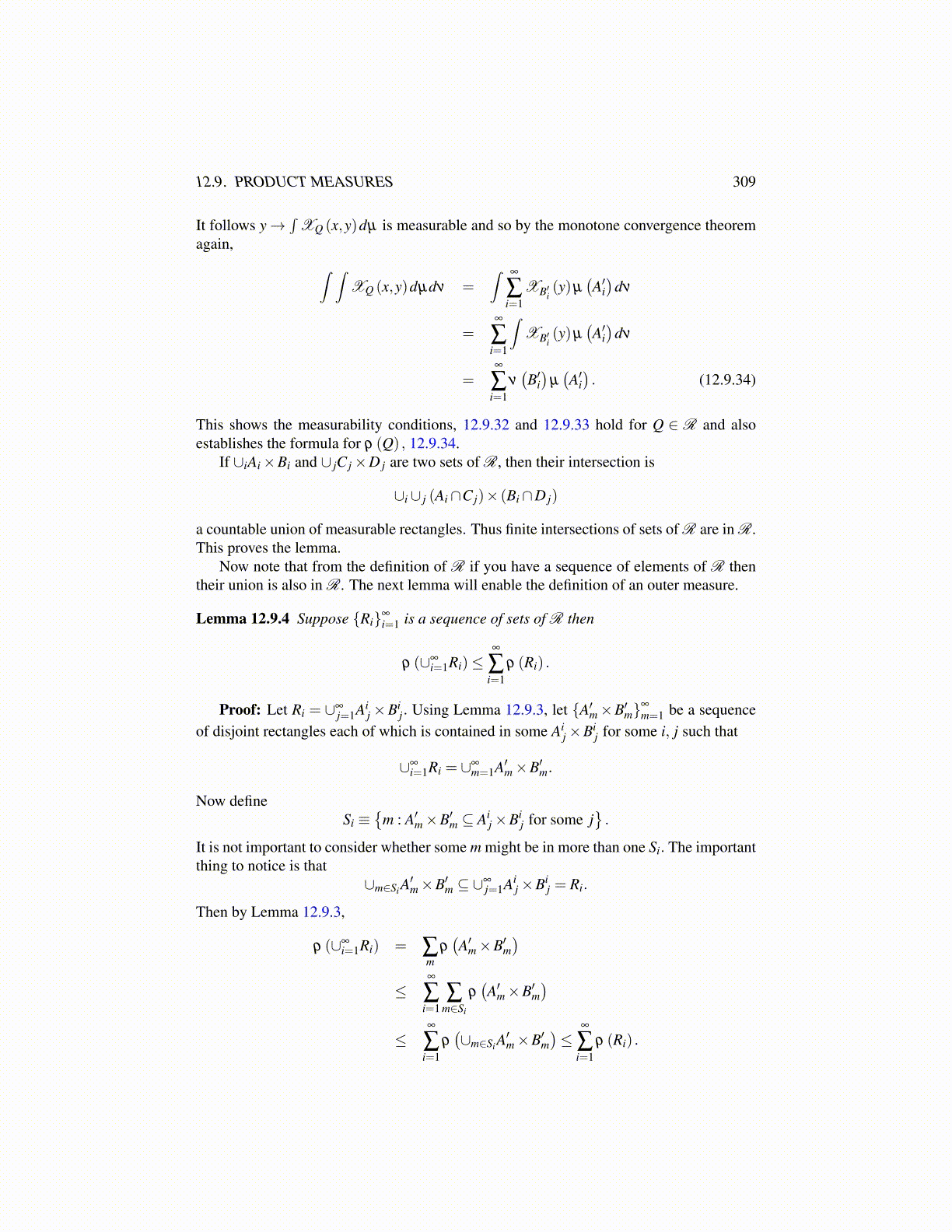
12.9. PRODUCT MEASURES 309
It follows y→∫
XQ (x,y)dµ is measurable and so by the monotone convergence theoremagain, ∫ ∫
XQ (x,y)dµdν =∫ ∞
∑i=1
XB′i(y)µ
(A′i)
dν
=∞
∑i=1
∫XB′i
(y)µ(A′i)
dν
=∞
∑i=1
ν(B′i)
µ(A′i). (12.9.34)
This shows the measurability conditions, 12.9.32 and 12.9.33 hold for Q ∈ R and alsoestablishes the formula for ρ (Q) , 12.9.34.
If ∪iAi×Bi and ∪ jC j×D j are two sets of R, then their intersection is
∪i∪ j (Ai∩C j)× (Bi∩D j)
a countable union of measurable rectangles. Thus finite intersections of sets of R are in R.This proves the lemma.
Now note that from the definition of R if you have a sequence of elements of R thentheir union is also in R. The next lemma will enable the definition of an outer measure.
Lemma 12.9.4 Suppose {Ri}∞
i=1 is a sequence of sets of R then
ρ (∪∞i=1Ri)≤
∞
∑i=1
ρ (Ri) .
Proof: Let Ri = ∪∞j=1Ai
j×Bij. Using Lemma 12.9.3, let {A′m×B′m}
∞
m=1 be a sequenceof disjoint rectangles each of which is contained in some Ai
j×Bij for some i, j such that
∪∞i=1Ri = ∪∞
m=1A′m×B′m.
Now defineSi ≡
{m : A′m×B′m ⊆ Ai
j×Bij for some j
}.
It is not important to consider whether some m might be in more than one Si. The importantthing to notice is that
∪m∈SiA′m×B′m ⊆ ∪∞
j=1Aij×Bi
j = Ri.
Then by Lemma 12.9.3,
ρ (∪∞i=1Ri) = ∑
mρ(A′m×B′m
)≤
∞
∑i=1
∑m∈Si
ρ(A′m×B′m
)≤
∞
∑i=1
ρ(∪m∈SiA
′m×B′m
)≤
∞
∑i=1
ρ (Ri) .